#jack michaud
Explore tagged Tumblr posts
Text



some closeups of karim, frank, and jack 🐺✰
164 notes
·
View notes
Text

"POLICE COURT DEALS WITH FOUR OFFENDERS," North Bay Nugget. April 13, 1934. Page 2. --- Gross Indecency Case Held in Abeyance; Three Suffer Conviction ---- Four men were arraigned in police court this morning, Friday the 13th. Three were sentenced and the fourth remanded until tomorrow morning.
Jack Murphy, who gave his address as Ireland, was remanded when he appeared to answer a charge of gross indecency with a male person Tuesday night.
A 19-year-old boy, clothed only in his shirt, rushed into the police office from a car and entered the complaint with Sergeant Frank Michaud. The youth alleged the act was committed in the Hop Kee restaurant on Oak street. The boy wore no pants or shoes and stockings. After an hour's search, Sergeant Michaud and Constables Green and Bell located Murphy at 288 Oak street east.
The case was remanded this morning due to the absence of Crown Attorney T. E. McKee.
Rod Riders Pleading guilty to stealing a ride on the T. and N. O. Railway last night, Kenneth McEwan, Highland Creek, and Ernest Cook, Toronto, were fined $5 and costs or 15 days by Magistrate Weegar this morning. Both chose the jail term. The charges were preferred by T. and N. O. Constable William McCullough.
#north bay#police court#gross indecency#riding the rails#trespassing#single unemployed men#homosexuality in canadian history#wolves and punks#great depression in canada#sentenced to prison#county jail#crime and punishment in canada#history of crime and punishment in canada
0 notes
Text
Not for Everyone: A grand list of 143 weird books
This is my meticulously curated list of 143 of the weirdest books I’ve ever read. Weird here can mean subject matter, the way it was written, or just that it’s off the beaten path. It certainly does not include every weird book out there. But it is a start if you are interested in reading weird lit yet have no idea where to begin. I encourage you to dig in... if you dare.
1. Dirty Secret: A Daughter Comes Clean About Her Mother's Compulsive Hoarding by Jessie Sholl, (2010)
2. Ghost Story by Peter Straub, (1989)
3. My Life Among the Serial Killers: Inside the Minds of the World's Most Notorious Murderers by Helen Morrison and Harold Goldberg, (2004)
4. The Amityville Horror by Jay Anson, (1977)
5. Sophie Crumb: Evolution of a Crazy Artist by Sophie Crumb, (2010)
6. The Farm: Life Inside a Women's Prison by Andi Rierden, (1997)
7. On the Bus: The Complete Guide to the Legendary Trip of Ken Kesey and the Merry Pranksters and the Birth of Counterculture by Paul Perry, (1997)
8. The Haunting of Hill House by Shirley Jackson, (1959)
9. Nightwork: Sexuality, Pleasure, and Corporate Masculinity in a Tokyo Hostess Club by Anne Allison, (1994)
10. The A-Z Encyclopedia of Serial Killers by Harold Schechter, (1996)
11. Not Without my Daughter by Betty Mahmoody, (1987)
12. Herland by Charlotte Perkins Gilman, (1915)
13. Sybil: The Classic True Story of a Woman Possessed by Sixteen Personalities by Flora Rheta Schreiber, (1973)
14. Electroboy: A Memoir of Mania by Andy Behrman, (2002)
15. You Better Not Cry: Stories for Christmas by Augusten Burroughs, (2009)
16. Snuff by Chuck Palahniuk, (2008)
17. Pimp: The Story of my Life by Iceberg Slim, (1967)
18. Black Hole by Charles Burns, (2005)
19. My Lobotomy by Howard Dully and Charles Fleming, (2007)
20. Fun Home: A Family Tragicomic by Alison Bechdel, (2006)
21. Hell’s Angels: A Strange and Terrible Saga by Hunter S. Thompson, (1966)
22. The Electric Kool-aid Acid Test by Tom Wolfe, (1968)
23. Hardcore Mother by Maxon Crumb, (2001)
24. In the Heart of the Sea: The Tragedy of the Whaleship Essex by Nathaniel Philbrick, (2000)
25. House of Leaves and The Whalestoe Letters by Mark Z. Danielewski, (2000)
26. Tweak: Growing up on Methamphetamines by Nic Sheff, (2008)
27. Fear and Loathing in Las Vegas: A Savage Journey to the Heart of the American Dream by Hunter S. Thompson, (1971)
28. I Like You: Hospitality under the Influence by Amy Sedaris, (2006)
29. Stranger than Fiction by Chuck Palahniuk, (2004)
30. SantaLand Diaries by David Sedaris, (1998)
31. Trout Fishing in America/ The Pill vs. The Springhill Mine Disaster/ In Watermelon Sugar by Richard Brautigan, (1989)
32. The Long, Hard Road out of Hell by Marilyn Manson, (1998)
33. Naked Lunch by William S. Burroughs, (1959)
34. She’s Come Undone by Wally Lamb, (1992)
35. Simple Times: Crafts for Poor People by Amy Sedaris, (2010)
36. Voluntary Madness: My Year Lost and Found in the Loony Bin by Norah Vincent, (2008)
37. The Cannibals of Candyland by Carlton Mellick III, (2009)
38. The Sallie House Haunting by Debra Lyn Pickman, (2010)
39. The Demonologist by Gerard Brittle, (1980)
40. Off Season (Dead River #1) by Jack Ketchum, (1980)
41. Room by Emma Donoghue, (2010)
42. The Girl Next Door by Jack Ketchum, (1989)
43. The Lottery and Other Stories by Shirley Jackson, (1949)
44. When Rabbit Howls by Truddi Chase, (1987)
45. Red Dragon by Thomas Harris, (1981)
46. Dark Places by Gillian Flynn, (2009)
47. The Hot House: Life Inside Leavenworth Prison by Pete Earley, (1992)
48. Ted Bundy: Conversations with a Killer by Stephen Michaud and Hugh Aynesworth, (1989)
49. Devil’s Knot: The True Story of the West Memphis Three by Mara Leveritt, (2002)
50. The Ice Man: Confessions of a Mafia Contract Killer by Philip Carlo, (2006)
51. The Complete Grimm’s Fairytales by Jacob and Wilhelm Grimm, (1812)
52. Lost at Sea: The Jon Ronson Mysteries by Jon Ronson, (2012)
53. Them: Adventures with Extremists by Jon Ronson, (2001)
54. The Psychopath Test: A Journey through the Madness Industry by Jon Ronson, (2011)
55. Life After Death by Damien Echols, (2012)
56. The Nasty Bits: Collected Varietal Cuts, Usable Trim, Scraps, and Bones by Anthony Bourdain, (2005)
57. Damned by Chuck Palahniuk, (2011)
58. Party Monster: A Fabulous but True Tale of Murder in Clubland by James St. James, (1999)
59. What Cops Know by Connie Fletcher, (1990)
60. Mommie Dearest by Christina Crawford, (1978)
61. I’m Down Mishna Wolf, (2009)
62. Jesus Land: A Memoir by Julia Scheeres, (2005)
63. Free For All: Oddballs, Geeks, and Gangstas in the Public Library by Don Borchert, (2007)
64. Sickened: The Memoir of a Munchausen by Proxy Childhood by Julie Gregory, (2003)
65. Newjack: Guarding Sing Sing by Ted Conover, (1999)
66. Word Freak: Heartbreak, Triumph, Genius, and Obsession in the World of Competitive Scrabble Players by Stefan Fatsis, (2001)
67. Napalm & Silly Putty by George Carlin, (2001)
68. Crimson Stain by Jim Fisher, (2000)
69. Are you my Mother? A Comic Drama by Alison Bechdel, (2012)
70. The Complete Persepolis by Satrapi Marjane, (2003)
71. Something Wicked This Way Comes by Ray Bradbury, (1962)
72. Hunger Makes Me A Modern Girl by Carrie Brownstein, (2015)
73. Drinking at the Movies by Julia Wertz, (2010)
74. Calling Dr. Laura by Nicole J. Georges, (2013)
75. The Devil in the Kitchen: Sex, Pain, Madness, and the Making of a Great Chef by Marco Pierre White, (2006)
76. Food: A Love Story by Jim Gaffigan, (2014)
77. American Splendor Presents: Bob and Harv’s Comics by Harvey Pekar and Robert Crumb, (1996)
78. My Friend Dahmer by Derf Backderf, (2012)
79. Cake Wrecks: When Professional Cakes go Hilariously Wrong
80. Bedbugs by Ben H. Winters, (2011)
81. Chicken: Self Portrait of a Young Man for Rent by David Henry Sterry, (2002)
82. Hyperbole and a Half: Unfortunate Situations, Flawed Coping Mechanisms, Mayhem, and Other Things That Happened by Allie Brosh, (2013)
83. You Got Nothing Coming: Notes from A Prison Fish by Jimmy A. Lerner, (2002)
84. Over Easy by Mimi Pond, (2014)
85. Marbles: Mania, Depression, Michelangelo, and Me by Ellen Forney, (2012)
86. SCUM Manifesto by Valerie Solanas, (1967)
87. The Gallery of Regrettable Food: Highlights from Classic American Recipe Books by James Lileks, (2001)
88. Horrorstör by Grady Hendrix, (2014)
89. My Best Friend’s Exorcism by Grady Hendrix, (2016)
90. A Head Full of Ghosts by Paul Tremblay, (2015)
91. This House is Haunted by Guy Lyon Playfair, (1980)
92. The Sarah Book by Scott McClanahan, (2015)
93. Crapalachia: A Biography of a Place by Scott McClanahan, (2013)
94. The Black Hope Horror: The True Story of a Haunting by Ben and Jean Williams, (1991)
95. $2.00 A Day: Living on Almost Nothing in America by Kathryn J. Edin and H. Luke Shaefer, (2015)
96. The Stranger in the Woods: The Extraordinary Story of the Last True Hermit by Michael Finkel, (2017)
97. True Crime Addict: How I Lost Myself in the Mysterious Disappearance of Maura Murray by James Renner, (2016)
98. The Road to Jonestown: Jim Jones and People’s Temple by Jeff Guinn, (2017)
99. Conversations with Ed and Lorraine Warren by T. Sealyham, (2011)
100. Educated by Tara Westover, (2018)
101. North of Normal: A Memoir of My Wilderness Childhood, My Unusual Family, and How I Survived Both by Cea Sunrise Person, (2014)
102. I’ll Be Gone In The Dark: One Woman’s Obsessive Search for the Golden State Killer by Michelle McNamara, (2018)
103. Son of a Grifter: The Twisted Tale of Sante and Kenny Kimes, the Most Notorious Con Artists in America: A Memoir By The Other Son by Kent Walker and Mark Schone, (2001)
104. Playing Dead: A Journey Through the World of Death Fraud by Elizabeth Greenwood, (2016)
105. The Contortionist’s Handbook by Craig Clevenger, (2002)
106. Selp-Helf by Miranda Sings, (2015)
107. The Art and Science of Dumpster Diving by John Hoffman and Bruce Sterling, (1992)
108. Strays: A Lost Cat, a Homeless Man, and Their Journey Across America by Britt Collins, (2017)
109. My Year of Rest and Relaxation by Ottessa Moshfegh, (2018)
110. A Father’s Story by Lionel Dahmer, (1994)
111. The Gates of Janus: Serial Killing and Its Analysis by Ian Brady, (2001)
112. Eileen by Ottessa Moshfegh, (2015)
113. IT’S ME Edward Wayne Edwards: The Serial Killer You’ve Never Heard of by John A. Cameron, (2014)
114. We Sold Our Souls by Grady Hendrix, (2018)
115. The Trauma Cleaner: One Woman's Extraordinary Life in the Business of Death, Decay, and Disaster by Sarah Krasnostein, (2017)
116. The Psychopath Inside: A Neuroscientist’s Personal Journey into the Dark Side of the Brain by James Fallon, (2013)
117. Rising out of Hatred: The Awakening of a Former White Nationalist by Eli Saslow, (2018)
118. Weekends at Bellevue: Nine Years on the Night Shift at the Psych E.R. by Julie Holland, (2009)
119. The Phantom Prince: My Life with Ted Bundy by Elizabeth Kendall, (1981)
120. High on Arrival by Mackenzie Phillips, (2009)
121. Hell’s Gate: Terror at Bobby Mackey’s Music World by Douglas Hensley, (1993)
122. From Cradle to Grave: The Short Lives and Strange Deaths of Marybeth Tinning’s Nine Children by Joyce Egginton, (1989)
123. In The Dream House by Carmen Maria Machado, (2019)
124. Love as Always, Mum xxx by Mae West, (2018)
125. Solutions and other Problems by Allie Brosh, (2020)
126. The Serial Killer Cookbook: True Crime Trivia and Disturbingly Delicious Last Meals from Death Row's Most Infamous Killers and Murderers by Ashley Lecker, (2020)
127. Trixie and Katya's Guide to Modern Womanhood by Trixie Mattel, Katya Zamolodchikova, (2020)
128. American Animals: A True Crime Memoir by Eric Borsuk, (2018)
129. The Southern Book Club’s Guide to Slaying Vampires by Grady Hendrix, (2020)
130. Couple Found Slain: After a Family Murder by Mikita Brottman, (2021)
131. Broken (In the Best Possible Way) by Jenny Lawson, (2021)
132. You’ll Never Believe What Happened to Lacey: Crazy Stories about Racism by Amber Ruffin, (2021)
133. Yearbook by Seth Rogen, (2021)
134. Today a Woman went Mad in the Supermarket: Stories by Hilma Wolitzer, (2021)
135. Nightbitch by Rachel Yoder, (2021)
136. Chasing the Boogeyman by Richard Chizmar, (2021)
137. A Killer by Design: Murderers, Mindhunters, and My Quest to Decipher the Criminal Mind by Ann Burgess, (2021)
138. Tiger King: The Official Tell-all Memoir by Joe Exotic, (2021)
139. The Minds of Billy Milligan by Daniel Keyes, (1981)
140. Waiting for an Echo: The Madness of American Incarceration by Christine Montross, (2020)
141. The Empathy Exams by Leslie Jamison, (2014)
142. Murder Book: A Graphic Novel of a True Crime Obsession by Hilary Fitzgerald Campbell, (2021)
143. Nobody's Fool: The Life and Times of Schlitzie the Pinhead by Bill Griffith, (2019)
39 notes
·
View notes
Text
I just watched Shadow & Bone - The After party and at one point the interviewer refers to jesper as a 'gay gunslinger' and I so badly wanted one of the actors to go "actually, he's bisexual". Most of them have really gone through all the books to try and stay true to their characters so I was a little disappointed when none of them said anything. It was such a small moment and maybe they didn't notice but at that moment, I felt like screaming at the screen, "JESPER IS BISEXUAL." Anyway, I really hope that they clarify that in season 2. Wesper's story in the books doesn't start until much later and as much as I want Kit and Jack to give us all those wesper moments as soon as possible, I really would appreciate it if he has a female love interest or even just shows any interest in any female (*cough* Madeline Michaud *cough*) before the whole wylan storyline.
#jesper is 100% bisexual#and the show needs to acknowledge that#thanks for coming to this ted talk#shadow and bone#kaz brekker#six of crows#crooked kingdom#jesper fahey#wylan van eck
17 notes
·
View notes
Text
BLOG NUMBER 6: POV and Perspective
March 14, 2022
My story, Flight from Egypt, employs a third person point of view (POV). The primary perspective is that of Mara Michaud, the story’s protagonist. To complicate my saga, I have also included to a far lesser extent the perspective of an antagonist, a person who is in pursuit of Mara (I’m withholding his name until a latter point in the semester).
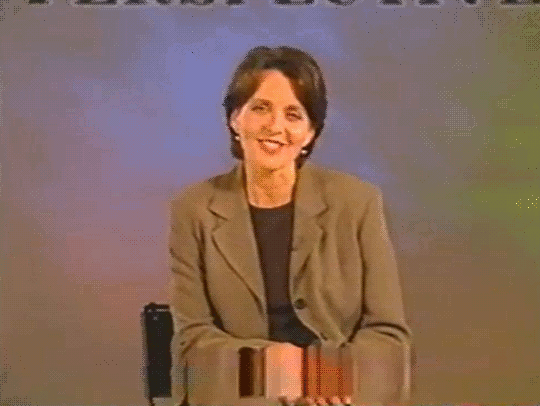
As the author of this tale I created two characters who, for differing reasons, are under levels of stress that, in our age, are difficult to envision. Mara is under obvious pressure as a persecuted person who experiences significant losses. The antagonist, in my opinion, is also under stress; however, his pressures are largely self-inflicted. In either case, I did not trust my characters to fully comprehend either the tensions placed upon their existences or their subsequent responses, both active and passive. Hence, I opted for the prescience of a “wise” narrator to perceive both the reactions and, in the case of Mara only, percieving her mental deliberations and inner thoughts.

To a large extent Mara is a victim: the story establishes that she is literally a victim of the ongoing circumstances. Her ability to control her life is sginificantly constrained. However, having never created a voice of her own, she frequently views herself as a victim to most facets of her life. Yes, a story might have been created using Mara’s personal POV (she tells the tale, not the narrator); yet I made the decision to tell her story from a broader view, similarly as would an audience member in retelling a tragic play a day later. Yes, Annie Proux could have written Brokeback Mountain from a first person POV; however, I believe that she did not for similar reasons I held for Flight from Egypt: the characters were not sufficiently knowledgeable of themselves to convey the full story.
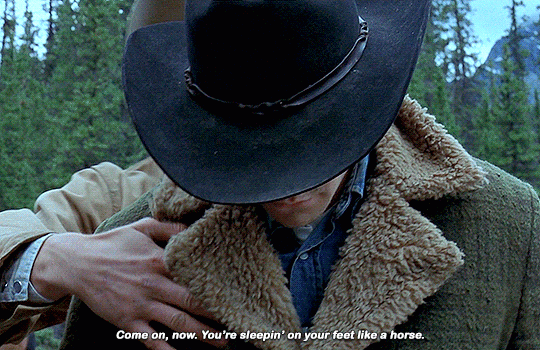
“They never talked about the sex, let it happen, at first only in the tent at night, then in the full daylight with the hot sun striking down, and at evening in the fire glow, quick, rough, laughing and snorting, no lack of noises, but saying not a goddamn word except once Ennis said, “I’m not no queer,” and Jack jumped in with “Me neither. A one-shot thing. Nobody’s business but ours.” This excerpt from Brokeback Mountain by Annie Proux exemplifies her possible rationale for selecting a third person point of view: her two characters are, sadly, clueless to the circumstances of their nature. Like Mara, Jack and Ennis are victims of the respective circumstances. As Michael Kardos states in The Art and Craft of Fiction, third person stories can “provide psychological distance, or an understanding of the story that is unavailable to the character himself …”

In a partial similarity to Richard Rausch’s story, Tandolfo the Great, my story employs a limited omniscient POV, that is, the story’s narrator has full permission to access the mind of the protagonist only. Her plight is the crux of the story and the reader should know the thoughts that befall her. Differing with Rausch’s story, I decided not to create the antagonist from an omniscient POV: he is Mara’s adversary by choice and affects Mara in her response to his threats. As a writer, I detested his behavior and did not want to confront the workings of, what I considered, his sick mind. Our access to my antagonist is strictly an objective view: we witness only his words and behavior. The antagonist is a bit like the Gollum in Tolkien’s Hobbit: he is the embodiment of evil, largely through the mechanisms of his own decisions.
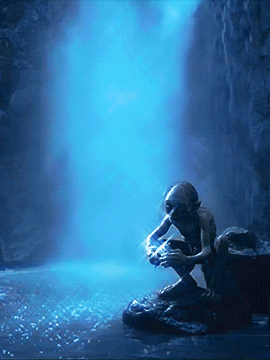
I enjoyed reading Tandolfo the Great and comparing the POV and perspective of Rodney Wilbury, Rausch’s protagonist, with my story’s prime character, Mara Michaud. While the two characters are dissimilar, both are in their own ways pathetic in their abilities to cope with life’s traumas. Mara, of course, is subjected to extreme urgencies that would break most of us; however, both Mara and Rodney lack an understanding of their circumstances. Mara is forced to flee her own home because of political persecution, while Rodney (as Tandolfo) is forced to flee the birthday party because he behaves and speaks as a person who is not in control. Both characters are grieving their losses. Both are not in control. Richard Rausch understands his character and has chosen to share Rodney from a limited omniscient POV to emphasize his protagonist’s limits in fathoming his circumstances.

6 notes
·
View notes
Text
Story of Ted Bundy
TW: execution photos, details of deaths
**a more detailed victim list will be posted later, beware of this post if you are sensitive to blood/gore/other oddities of true crime as it will have crime scene photos**
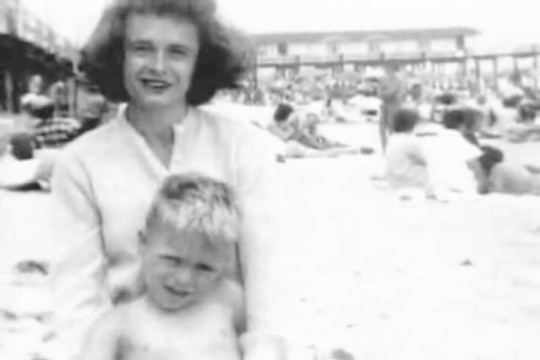
Theodore Robert Cowell, was born on November 24th, 1946 to Eleanor Louise Cowell at the Elizabeth Lund Home for Unwed Mothers. Eleanor was known by Louise and Ted’s father’s identity is unconfirmed. His birth certificate states Lloyd Marshall, a salesman and Air Force veteran, as his father. Louise claims his father to be an old war veteran known as Jack Worthington, this is who the King’s County Sheriff’s Office has listed as such. A few family members believe that Louise’s father, Samuel Cowell, could’ve been Ted’s father but no evidence has been found to support this claim.
Ted was raised in Philadelphia, Pennsylvania by his maternal grandparents for the first three years of his life. He, family, and friends, were told that his grandparents were actually his parents and that his mother was his older sister in order to protect them all from the stigma of birthing a child out of wedlock. There are variations of how Bundy found out his true parentage. A past girlfriend was told that Bundy was shown his birth certificate by a cousin, Stephen Michaud and Hugh Aynesworth (both biographers) were told by Bundy that he found the certificate himself. Anne Rule (biographer and crime writer, who knew Bundy personally) believes he did not find this information until 1969. In 1950, Louise changed her surname from Cowell to Nelson and left Philadelphia to live with cousins Alan and Jane Scott in Tacoma, Washington. In 1951, Louise met Johnny Culpepper Bundy at an adult singles night at Tacoma’s First Methodist Church. Johnny and Louise later married that year and Johnny formally adopted Ted. Johnny and Louise went on to have four children together, and whilst Johnny tried including Ted on family trips and outings, he remained distant.

Teenage Ted Bundy
In 1965, Ted graduated from Woodrow Wilson High School and enrolled in the University of Puget Sound where he spent a year before transferring to the University of Washington to study Chinese. In 1967, he became involved romantically with a UW classmate, most commonly known as Stephanie Brooks in biographies. In 1968, he dropped out of college and worked at a series of minimum wage jobs; even working as Arthur Fletcher’s bodyguard and driver during his Lieutenant Governor campaign. Brooks then ended their relationship due to Bundy’s lack of ambition. He also took one semester at Temple University after returning back to Arkansas and Philadelphia to visit family. In 1969, Ted moved back to Washington where he met Elizabeth Kloepfer (also known in Bundy literature as Liz Kendall, Beth Archer, or Meg Anders).

Ted Bundy & Elizabeth Kloepfer
In 1970, Ted re-enrolled at the University of Washington as a psychology major. During this time he became an honor student and was well regarded by his professors. In 1971, he took a job at Seattle’s Suicide Hotline Crisis Center, where he met Anne Rule who noted nothing disturbing or abnormal about Bundy. In early 1973, despite his average law school admission scores, he was granted admittance to UPS and the University of Utah. In 1973, he rekindled his relationship with Stephanie Brooks. He also continued to date Elizabeth Kloepfer. Neither woman knew of the other at this time. During this time period, Brooks had flown in several times to stay with him in Seattle. He had discussed marriage with Stephanie and had also introduced her as his fiancee at a point. In 1974, he abruptly broke off all contact. He did not return phone calls or letters. After a month of trying, Brooks was finally able to contact Bundy by phone, asking why he had so abruptly ended the relationship without an explanation. He responded with, “Stephanie, I have no idea what you mean.” and hung up the phone. She never heard from him again after that. He had just wanted to prove to himself that he could marry her in retaliation of her ending their former relationship before.
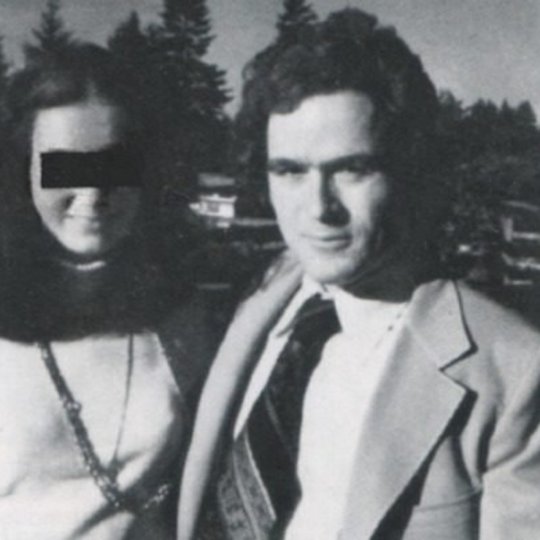
Ted Bundy and Stephanie Brooks
Ted had been skipping classes in law school by this point and had stopped attending all together by april when the first series of murders were reported. Circumstantial evidence points Ann Marie Burr, an 8-year-old girl, as one of Bundy’s first victims in 1962.
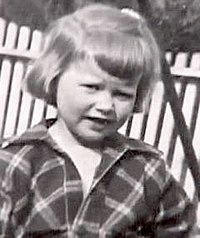
Ann Marie Burr, age 8
Washington/Oregon Murders
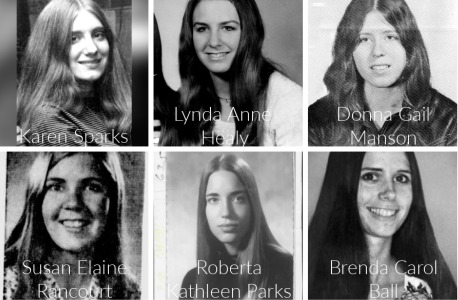

College aged young women started to disappear at a rate of about one a month in Washington and Oregon. On January 4th, 1974, shortly after midnight, Bundy snuck into the basement apartment of 18-year-old Karen Sparks (also known as Joni Lenz, Mary Adams, or Terri Caldwell in Bundy literature). He bludgeoned her with a metal rod from her bed frame and then sexually assaulted her with the same rod. She was unconscious for 10 days but survived. She sustained major permanent physical and mental disabilities. In the early morning of February 1st, 1974, Bundy broke into the basement bedroom of Lynda Anne Healy. He beat her until she was unconscious, dressed her in a white blouse, blue jeans, and boots and carried her away from the scene. On March 12th, 1974, Donna Gail Manson, a 19-year-old student at the Evergreen State College in Olympia went missing as she left her dorm to attend a jazz concert that she would never attend. April 17th, 1974, Susan Elaine Rancourt disappeared from Central Washington State College, on her way back to her dorm after an advisors meeting. Two female students later came forward with encounters with the same man. One was on the night of Susan’s disappearance and the other was three days before that. The man had his arm in a sling and had asked the girls for help loading his books into a brown or tan Volkswagen beetle. In Corvallis at Oregon State University, on May 6th, 1974, Roberta Kathleen Parks, left her dormitory to meet friends for coffee and she never arrived.
Police precincts were growing more and more concerned with each abduction. As they had no evidence or connection between each of the girls besides they were all young, attractive, college-aged, white women with their brown hair parted down the middle. On June 1st, 1974, Brenda Carol Ball, disappeared from the Flame Tavern in Burien, near the Seattle-Tacoma International Airport. She had last been seen in the parking lot with a brown-haired man with his arm in a sling. Not too long after that, on June 11th, 1974 Georgann Hawkins disappeared walking down a brightly lit alleyway between her boyfriend’s dormitory and her own sorority house. After Georgann’s disappearance was made public in the media, witnesses came forward reporting that they saw a man that night in an alley behind a nearby dormitory. He was on crutches with a leg cast and was struggling to carry a briefcase. Another witness had said that the man actually asked for her help. At this time Ted was working in Olympia as the Assistant Director of the Seattle Crime Prevention Advisory Commission. He wrote pamphlets for women on rape prevention here. He also later worked at the Department of Emergency Services (DES), which helped look for the missing women. This is where he met Carol Anne Boone, and began dating her (as well as Elizabeth Kloepfer).
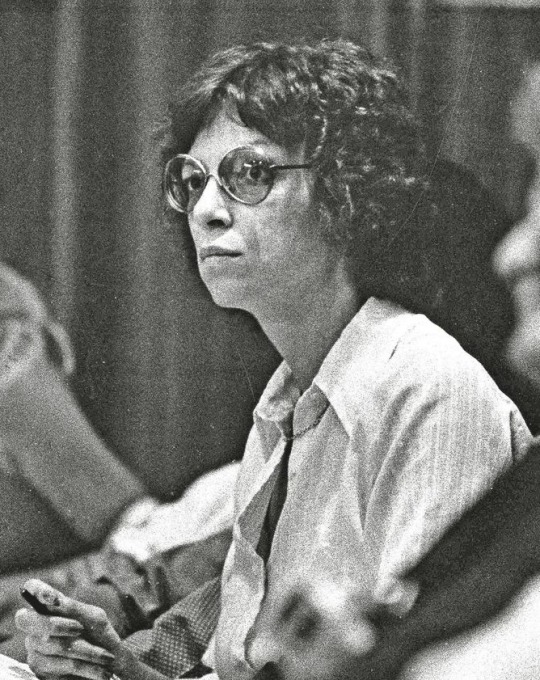
Carol Anne Boone
Pressure was immense on law enforcement at this time. This was very frustrating as panic spread through young women of the area, with six disappearances and one brutal beating. Rates of hitchhiking in young women dropped drastically. Police could not provide reporters with what little information they had because they did not want to compromise the investigation. Similarities between the victims were noted by the police in their investigations: The disappearances all took place at night, each disappearance was usually near ongoing construction work, also within a week of midterm or final exams. Every single victim was wearing slacks or blue jeans; and at most crime scenes, there were sightings of a man wearing a cast or a sling, and driving a brown or tan Volkswagen Beetle. On July 14th, 1974, five female witnesses on a beach at Lake Sammamish State Park in Issaquah, Washington, described an attractive man in a white tennis outfit with his arm in a sling. They also described him speaking in a light accent, possibly Canadian or British, and was introducing himself as Ted. He asked for their help in unloading a sailboat from his Volkswagen beetle. Four of the girls refused but one accompanied him to the point of the car in view. When she did not see a sailboat, she fled the area. Three other witnesses saw the man, now known as Ted, saw him approach Janice Ann Ott. He fed her the sailboat story and she was seen leaving the beach with him. Four hours after Janice’s disappearance, Denise Marie Naslund, vanished after leaving a picnic to use the restroom.
Idaho/Utah Murders and Kidnappings
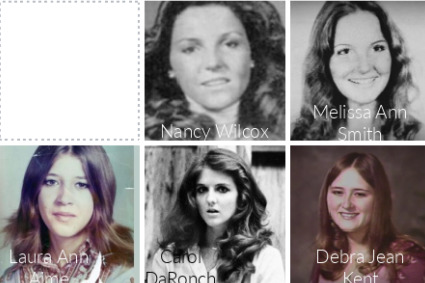
In August 1974, Ted moved to Salt Lake City, Utah, after receiving a second letter of acceptance from the University of Utah Law School. He continued to call Elizabeth Kloepfer as he lived in Salt Lake, but dated at least a dozen other women at the time. On September 2nd, 1974, Ted abducted, raped, and murdered a still unknown hitchhiker in Idaho. On October 2nd, 1974, Ted kidnapped 16-year-old Nancy Wilcox from Holladay, a suburb of Salt Lake City. On October 18th, 1974, The daughter of the police chief of Midvale, Melissa Anne Smith, vanished after leaving a pizza parlor. Her body was found nine days later, nude, in a mountainous area. Postmortem reports say she may have remained alive for up to seven days after her disappearance. On October 17th, 1974, Laura Ann Aime disappeared after leaving a cafe around midnight. Her body was found by hikers, nine miles northeast of American Fork Canyon on Thanksgiving Day. Both, Melissa and Laura had been beaten, raped, sodomized, and were strangled with nylon stockings. November 8th, 1974, Ted approached Carol DaRonch, introduced himself as Officer Roseland and used the story of someone attempting to break into her car and to accompany him to the police station to make a report. When Carol pointed out that he was not going to the police station, he immediately pulled over to the shoulder of the road and tried to handcuff her. In their struggle, he accidentally handcuffed both cuffs to the same wrist. Carol was able to throw the door open and escape because of this. On the same evening, Debra Jean Kent disappeared after leaving a theater production to pick up her brother. The school's drama teacher and a student told police that "a stranger" had asked each of them to come out to the parking lot to identify a car. Another student later saw the same man pacing in the rear of the auditorium, and the drama teacher spotted him again shortly before the end of the play. Outside of the auditorium, investigators were able to recover a key that unlocked the handcuffs on Carol DaRonch’s wrists.
In November, Elizabeth Kloepfer called King County police for the second time, after reading about the string of disappearances and murders in the towns surrounding Salt Lake. Bundy had risen considerably as a suspect among the King County Police, but the most reliable witness from Lake Sammamish could not identify in a photo lineup. In December, Elizabeth called the Salt Lake City police with her suspicions. Ted was then added to their list of suspects, but there were no credible forensic links to put him at any of the Utah crimes. In January of 1975, Ted returned to Seattle and stayed a week with Elizabeth. She did not tell him she had reported him to the police on three occasions. She also made plans to visit him in August of 1975 in Salt Lake. Unfortunately, Ted’s crimes moved to Colorado at this point.
Colorado/Utah/Idaho Murders

January 12th, 1975, Caryn Eileen Campbell disappeared walking down a well lit hallway between the elevator and her room at the Wildwood Inn in Snowmass Village, Colorado. Her body was found a month later on a dirt road next to the resort, nude. On March 15th, 1975, Julie Cunningham disappeared while walking to a dinner date with a friend from her apartment. April 6th, 1975, Denise Lynn Oliverson vanished while riding her bicycle to her parents house. Her bike and sandals were found near a railroad bridge in a viaduct. May 6th, 1975, Ted was able to lure 12-year-old Idaho native from Alameda Junior High School, Lynette Dawn Culver, to his hotel room in Salt Lake City, where he drowned and raped her. He disposed of her body in possibly the Snake river north of Pocatello. In Mid-May, three of Ted’s coworkers from DES came to stay with him for a week. This included Carol Anne Boone. They stayed for about a week. Subsequently, Ted visited Elizabeth Kloepfer in early June. They discussed getting married the following Christmas. She again made no comments about her talking to police on several occasions. Ted also did not disclose his ongoing relationship with Carol Anne Boone or his relationship with a Utah law student known as both; Kim Andrews or Sharon Auer. June 28th, 1975, Susan Curtis disappeared from the campus of Brigham Young University, forty-five miles south of Salt Lake City. In August of 1975, Ted was also baptized into The Church of Jesus Christ of Latter Day Saints although he did not follow any of the religious practices and was not an active participant in services.
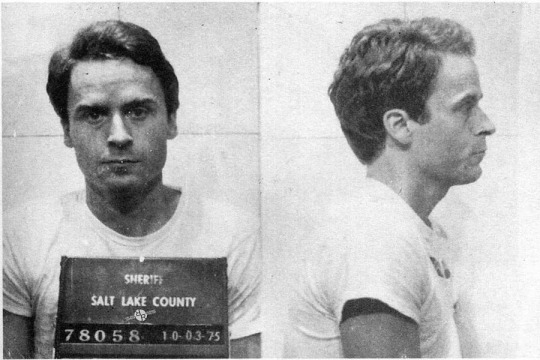
On August 16th, 1975, Officer Bob Hayward of the Utah Highway Patrol, arrested Ted in Granger. This was another suburb of Salt Lake City. Hayward had observed him cruising the residential area in the pre-dawn hours. Ted then fled the area at high speeds after seeing Hayward’s patrol car. After noticing the front passengers seat was removed and placed on the back seat, the car was searched. Hayward found a ski mask, another mask fashioned from pantyhose, a crowbar, handcuffs, trash bags, rope, an ice pick, and other burglary tools. Ted had said that the mask was for skiing, he found the handcuffs in the dumpster, and the rest were household items. Detective Jerry Thompson remembered a similar looking suspect and car description from Carol DaRonch’s attempted kidnapping. Police then searched Bundy’s apartment and were able to turn up a guide to Colorado’s ski resorts with a checkmark next to the Wildwood Inn. They were also able to find a brochure for Viewmont High School play in Bountiful where Debra Kent disappeared. They although did not find enough evidence to detain Ted and he was released on his own recognizance. Ted claimed later that investigators missed his collection of polaroid photos of his victims and he destroyed them after his release. Salt Lake police placed Ted under a 24 hour surveillance.
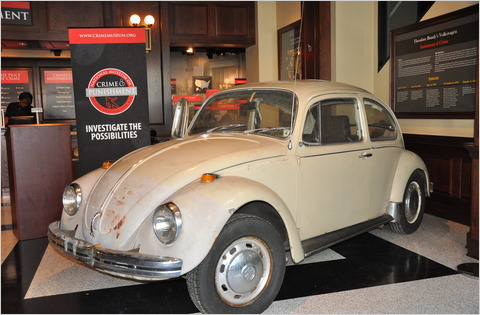

Detective Thompson flew to Seattle with two other detectives to interview Elizabeth Kloepfer. Elizabeth told them that in the year prior to Ted’s move to Salt Lake, she had discovered things that she "couldn't understand" in her house and also in Ted's apartment. The items she found included crutches, a bag of plaster of Paris that he had admitted stealing from a medical supply house, and a meat cleaver that was never used for cooking. Additional things she found included surgical gloves, an Oriental knife in a wooden case that he just kept in the glove compartment of his car, and a sack full of women's clothing. Ted was so far into debt, that Elizabeth suspected that he had stolen almost everything of significance that he owned. When she confronted him over a new TV and stereo, he warned her, "If you tell anyone, I'll break your fucking neck.” Elizabeth then mentioned that she would find Ted looking at her body with a flashlight under the covers on more than one occasion, and that he would get very upset if she mentioned cutting her hair. Which was long, brown, and parted in the middle. Detectives interviewing Elizabeth were able to confirm that Ted was not with her on any of the nights where the Pacific Northwest disappearances occurred. This is where Elizabeth learned about Stephanie Brooks and their brief engagement in 1973. In September, Ted sold his beetle to a Midvale teenager, but Utah police impounded it and dismantled it. They were able to find matching hair samples from Caryn Campbell. They also found “microscopically indistinguishable” hair strands from Melissa Smith and Carol DaRonch. On October 2nd, 1975, Police put Ted into a lineup and Carol DaRonch was able to identify him as Officer Roseland. Other witnesses were able to identify him as the stranger from the auditorium at Viewmont High School. He was able to be charged with aggravated kidnapping and attempted criminal assault in Carol DaRonch’s case. He was released on $15,000 bail, which was paid by his parents. He continued to live with Elizabeth Kloepfer during this time.
In February 1976, Ted stood trial for Carol DaRonch’s kidnapping. He waived his right to trial by jury because of the negative views surrounding the case and opted for a bench trial. After a four day trial, and a weekend of deliberation, Ted was found guilty of kidnapping and assault. In June he was sentenced to one to fifteen years in the Utah State Prison. In October, he was found hiding in bushes in the prison yard carrying an "escape kit". This included road maps, airline schedules, and a social security card. He spent several weeks in solitary confinement for this. Later in October, Colorado authorities charged him with Caryn Campbell's murder. He waived his right to extradition and was transferred to Aspen in January 1977.
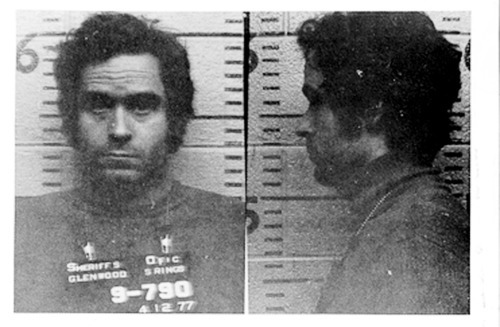
June 7, 1977, Ted was transported from the Garfield County jail in Glenwood Springs to Pitkin County Courthouse in Aspen for a preliminary hearing. He waived his right to a court appointed attorney and opted to serve as his own, and as such, was excused by the judge from wearing handcuffs or leg shackles. During a recess of the trial, he asked to visit the courthouse's law library to research his case. While out of view from his guards, behind a bookcase, he opened a window and jumped to the ground from the second story. He managed to injure his right ankle in the process as he landed. He shed the outer layer of his clothing. He walked through Aspen as roadblocks were being set up on its outskirts after noticing his disappearance, then hiked southward onto Aspen Mountain. Near the summit of the mountain, he broke into a hunting cabin. He was able to steal food, clothing, and a rifle. The following day he left the cabin and continued south toward the town of Crested Butte. Although, during this time he had managed to get lost in the forest. For two days he wandered aimlessly in the mountain forest, missing the two trails that led downward to his intended destination. On June 10th, 1977, he broke into a camping trailer on Maroon Lake, taking food and a ski parka; instead of continuing southward, he walked back north toward Aspen, eluding the roadblocks and search parties along the way. Three days later, he stole a car at the edge of an Aspen Golf Course. He drove back into Aspen, where two police officers noticed his car weaving in and out of its lane and pulled him over. He had been a fugitive for six days.
Back in jail at Glenwood Springs, Ted again ignored legal advice to stay put (not to try to escape again). It was said that the case against him, already weak at best, was deteriorating steadily as pre-trial motions consistently resolved in his favor and significant bits of evidence were ruled inadmissible. A quote stating, "A more rational defendant might have realized that he stood a good chance of acquittal, and that beating the murder charge in Colorado would probably have dissuaded other prosecutors... with as little as a year and a half to serve on the DaRonch conviction, had Ted persevered, he could have been a free man.” had shown that. But instead, Ted assembled a new escape plan. He acquired a detailed floor plan of the jail and a hacksaw blade from other inmates, and collected $500 in cash. This was smuggled in over a six-month period, by visitors, Mostly Carol Boone. During the evenings, while other prisoners were showering, he sawed a hole about one square foot, between the steel reinforcing bars in his cell's ceiling and, having lost 35 pounds, he was able to wriggle through it into the crawl space above. In the weeks that followed, he made several “practice runs”, exploring the space. Multiple reports from an informant of movement within the ceiling during the night were not investigated. By late 1977, Bundy's impending trial had become very high flying in the media in the small town of Aspen. Ted then filed a motion for a change of venue to Denver. On December 23rd, 1977, the Aspen trial judge granted the request, but he was sent to Colorado Springs, where juries had historically been hostile to murder suspects. On the night of December 30, with most of the jail staff on Christmas break and nonviolent prisoners on furlough with their families. Bundy piled books and files in his bed, covered them with a blanket to simulate his sleeping body, and climbed into the crawl space. He broke through the ceiling into the apartment of the chief jailer, who had been out for the evening with his wife. He changed into street clothes from the jailer's closet, and literally walked out the front door to his freedom.
Florida Murders and Assaults

Ted arrived in Tallahassee, Florida on January 8th, 1978, and rented a room under the alias of Chris Hagen at the Holiday Inn. Here Bundy tried to find work and leave his criminal past behind, thinking he’d be able to remain free if he didn’t bring police suspicion onto himself. He then was forced to leave his only job application after being asked to provide identification. He reverted to shoplifting and stealing credit cards from women’s wallets out of shopping carts. On January 15th, 1978, he entered Florida State University’s sorority Chi Omega. Starting at 2:45am, he bludgeoned Margaret Bowman and then garoted her with a nylon stocking. He moved on to Lisa Levy’s bedroom, who was beaten unconscious, strangled her, tore one of her nipples, bit deeply into her left buttock, and sexuallly assaulted her with a hair mist bottle. In the bedroom adjoining Lisa's, he attacked Kathy Kliener. He had broken her jaw and had a deep laceration on her shoulder. Karen Chandler was also attacked in her bedroom, she suffered a concussion, loss of teeth, a broken jaw, and a crushed finger. Kathy and Karen both survived and attributed their survival to the attacker being scared off by headlights illuminating through the window. The whole attack happened within fifteen minutes with thirty witnesses in earshot who seemingly heard nothing. Shortly after leaving the sorority, Ted broke into the basement apartment of Cheryl Thomas, eight blocks away. He dislocated her shoulder and fractured her jaw and skull in five different places during this attack.
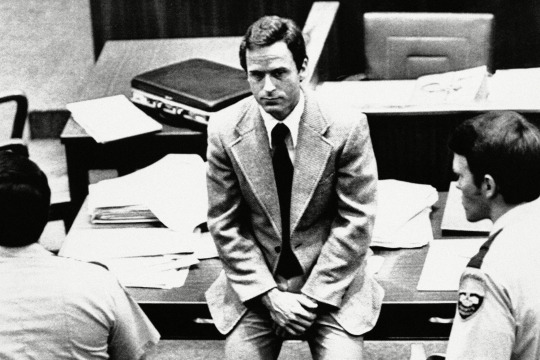
On February 8th, 1978, he approached the daughter of Jacksonville chief of Police, 12-year-old Leslie Parmenter, introducing himself as “Richard Burton, fire department”. He only backed off when challenged by Leslie’s older brother who had shown up to pick her up. That day, he backtracked to Lake City. February 9th, 1978, at Lake City Junior High, 12-year-old Kimberly Dianne Leach was summoned to retrieve a forgotten purse in her homeroom class and was never seen afterwards. Her mummified remains were found seven weeks afterwards in a pig farrowing shed near Suwannee River State Park. It appears she had been raped (her underwear was found near the body with semen in them) and her throat had been slit. On February 12th, 1978, Bundy could not pay his rent and had the growing suspicion that police were closing in on him, he decided to flee Tallahassee. Three days later he was apprehended by Pensacola officer, David Lee, near the Alabama border. In Miami, June of 1979, Ted stood trial for the Chi Omega killings and assaults. The jury deliberated for less than seven hours before convicting him on July 24, 1979, of the Bowman and Levy murders, three counts of attempted first degree murder and two counts of burglary. In January 1980, six months after his first Florida convictions, Ted stood trial in Orlando for the kidnapping of Kimberly Dianne Leach. After less than eight hours of deliberation, Ted was found guilty again. During the penalty phase of his trial, Bundy took advantage of an obscure Florida law; providing that a marriage declaration in court, in the presence of a judge, constituted a legal marriage. As he was questioning former Washington State DES coworker Carole Ann Boone, who had moved to Florida to be near Bundy, had testified on his behalf during both of his trials, and was again testifying on his behalf as a character witness, asked her to marry him. She accepted, and Bundy declared to the court that they were legally married. February 10th, 1980, Ted’s was sentenced to death by electrocution for the third time. In October of 1981, Carol Anne Boone, gave birth to a daughter and named Ted Bundy as the father.

Ted Bundy died by the Raiford electric chair at 7:16 a.m. EST on January 24, 1989. Hundreds of revelers sang, danced and set off fireworks in a pasture across from the prison as the execution was carried out, then cheered as the white hearse containing Bundy's corpse departed the prison. He was cremated in Gainesville, Florida and his ashes scattered at an undisclosed location in the Cascade Range of Washington State, in accordance with his will.
20 notes
·
View notes
Photo
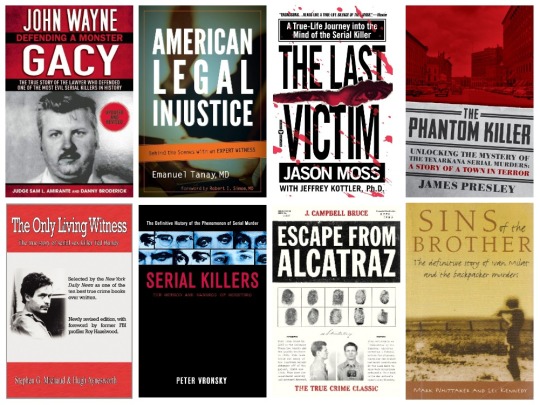
Favorite True Crime Books – part 2
John Wayne Gacy: Defending a Monster by Sam L. Amirante : “Sam, could you do me a favor?” Thus begins a story that has now become part of America’s true crime hall of fame. It is a gory, grotesque tale befitting a Stephen King novel. It is also a David and Goliath saga—the story of a young lawyer fresh from the Public Defender’s Office whose first client in private practice turns out to be the worst serial killer in our nation’s history.
Sam Amirante had just opened his first law practice when he got a phone call from his friend John Wayne Gacy, a well-known and well-liked community figure. Gacy was upset about what he called “police harassment” and asked Amirante for help. With the police following his every move in connection with the disappearance of a local teenager, Gacy eventually gives a drunken, dramatic, early morning confession—to his new lawyer. Gacy is eventually charged with murder and Amirante suddenly becomes the defense attorney for one of American’s most disturbing serial killers. It is his first case. This is a gripping narrative that reenacts the gruesome killings and the famous trial that shocked a nation.
American Legal Injustice: Behind the Scenes with an Expert Witness by Emanuel Tanay : Forensic psychiatrist Emanuel Tanay has testified in thousands of court cases as an expert witness, including such notorious cases as those of Jack Ruby, Sam Sheppard, and Theodore ‘Ted’ Bundy. Tanay walks the reader through his experiences in the courtroom, explaining the role of the forensic psychiatrist in the litigation process and providing a ‘behind-the-scenes’ view of our criminal justice system, including individual chapters on some of his most interesting and infamous cases. Tanay also provides clear examples of the rampant injustice that he has witnessed and argues that the potential for injustice is built into our legal system in the form of incompetent lawyers, the imbalance of resources between the pricey defense lawyers hired by large corporations in civil trials and the inexperienced lawyers often hired by plaintiffs, and the political concerns of elected judges and prosecutors. American Legal Injustice: Behind the Scenes with an Expert Witness is a must-read for Law & Order, Court TV, and true crime enthusiasts.
The Last Victim: A True-Life Journey into the Mind of the Serial Killer by Jason Moss : It started with a college course assignment, then escalated into a dangerous obsession. Eighteen-year-old honor student Jason Moss wrote to men whose body counts had made criminal history: men named Dahmer, Manson, Ramirez, and Gacy.
Posing as their ideal victim, Jason seduced them with his words. One by one they wrote him back, showering him with their madness and violent fantasies. Then the game spun out of control. John Wayne Gacy revealed all to Jason — and invited his pen pal to visit him in prison…
It was an offer Jason couldn’t turn down. Even if it made him…
The book that has riveted the attention of the national media, this may be the most revealing look at serial killers ever recorded and the most illuminating study of the dark places of the human mind ever attempted.
The Phantom Killer: Unlocking the Mystery of the Texarkana Serial Murders: The Story of a Town in Terror by James Presley : Set in the rowdy, often lawless town of Texarkana shortly after WWII, The Phantom Killer is the history of the most puzzling unsolved cases in the United States.
The salacious and scandalous murders of a series of couples on Texarkana’s “lovers lanes” in seemingly idyllic post-WWII America created a media maelstrom and cast a pall of fear over an entire region. What is even more surprising is that the case has remained cold for decades. Combining archival research and investigative journalism, Pulitzer Prize nominated historian James Presley reveals evidence that provides crucial keys to unlocking this decades-old puzzle.
Dubbed “the Phantom murders” by the press, these grisly crimes took place in an America before dial telephones, DNA science, and criminal profiling. Even pre-television, print and radio media stirred emotions to a fever pitch. The Phantom Killer, exhaustively researched, is the only definitive nonfiction book on the case, and includes details from an unpublished account by a survivor, and rare, never-before-published photographs.
Although the case lives on today on television, the Internet, a revived fictional movie and even an off-Broadway play, with so much of the investigation shrouded in mystery since 1946, rumors and fractured facts have distorted the reality. Now, for the first time, a careful examination of the archival record, personal interviews, and stubborn fact checking come together to produce new insights and revelations on the old slayings.
The Only Living Witness: The true story of serial sex killer Ted Bundy by Stephen Michaud and Hugh Aynesworth : Michaud and Aynesworth are a reporter and an investigator team who interviewed serial killer Ted Bundy while he was on death row in Florida. This volume chronicles his activities throughout several states but is at its best in a long section of transcripts from the interview in which, while he never admits his quilt, Bundy offers vivid details of the crimes and commentary on the mindset of a serial killer. This revised edition includes some additional information.
Serial Killers: The Method and Madness of Monsters by Peter Vronsky : In this unique book, Peter Vronsky documents the psychological, investigative, and cultural aspects of serial murder, beginning with its first recorded instance in Ancient Rome through fifteenth-century France on to such notorious contemporary cases as cannibal/necrophile Ed Kemper, the BTK killer, Henry Lee Lucas, Monte Ralph Rissell, Jerry Brudos, Richard Ramirez, “Unabomber” Ted Kaczynski, Ed Gein, John Wayne Gacy, Ted Bundy, and the emergence of what he classifies as the “serial rampage killer” such as Andrew Cunanan, who murdered fashion designer Gianni Versace.
Vronsky not only offers sound theories on what makes a serial killer but also makes concrete suggestions on how to survive an encounter with one—from recognizing verbal warning signs to physical confrontational resistance. Exhaustively researched with transcripts of interviews with killers, and featuring up-to-date information on the apprehension and conviction of the Green River killer and the Beltway Snipers, Vronsky’s one-of-a-kind book covers every conceivable aspect of an endlessly riveting true crime phenomenon.
Escape from Alcatraz: The True Crime Classic by J. Campbell Bruce : In 1963, just weeks before the original publication of this book, the last prisoner was escorted off Devil’s Island and Alcatraz ceased to be a prison. Author J. Campbell Bruce chronicles in spellbinding detail the Rock’s transition from a Spanish fort to the maximum-security penitentiary that housed such infamous inmates as Robert Stroud, aka the Birdman of Alcatraz, and mobster Al “Scarface” Capone. The chapters describing the daring escape attempts by Frank Morris and two accomplices from this “inescapable” prison became the basis for the 1979 Clint Eastwood movie. Discover the intriguing and absorbing saga of Alcatraz, whose name is still synonymous with punitive isolation and deprivation, where America’s most violent and notorious prisoners resided in tortuous proximity to one of the world’s favorite cities.
Sins of the brother: The definitive story of Ivan Milat and the backpacker murders by Mark Whitaker and Les Kennedy : Seven young backpackers brutally murdered. A nationwide police hunt spanning three years and thousands of hours of forensic investigation. And finally, the capture and conviction of one man.Sins of the Brother tells the gripping story of road-worker Ivan Milat and the horrific Belanglo Forest murders that shocked the world and forever etched themselves into Australian criminal folklore. It explores a family culture so twisted and bizarre it would lead inexorably to a serial killing spree, scrutinises the police case – its successes and failures – and reveals the chilling mystery left behind.Told in novelistic style from interviews with the Milat family, key police investigators, Crown lawyers and the lucky souls who escaped with their lives, Sins of the Brother is a classic of crime literature – a psychological thriller come to life and a disturbing portrait of a man whose delusions became reality.’More than just the suspenseful story of some notoriously evil murders, this shocking and strangely seductive book is a painstaking examination of today’s society. This is Australia on the slab.’
[Part 1]
72 notes
·
View notes
Photo

PENDANT PRODUCTIONS PROUDLY PRESENTS:
SEMINAR: a sci-fi anthology show, episode ninety - "A Time To Seek And A Time To Lose..."
When you need help, sometimes it comes from the places you least expect it. Featuring "Avatar" by Lisa N. Michaud and "Hero Justice" by Joe J. Thomas!
"Seminar" is a sci-fi anthology show where featured shorts are heard through the lens of lessons in a futuristic post-apocalypse. A full-cast, ongoing audio drama with no restrictions on genre. Episode transcript available at pendantaudio.com.
Apple Podcasts/iTunes: https://itunes.apple.com/podcast/seminar-original-anthology/id217204916
Spotify: https://open.spotify.com/show/7ELQCjmSVezoNH8a19TyoK
Stitcher: https://www.stitcher.com/podcast/pendant-productions/seminar
Podcast feed: http://www.pendantaudio.com/seminar-podcast.xml
Download link: http://pendantaudio.com/shows/seminar
Featuring the voice talents of:
Kathryn Pryde as Alice Dan Foster as Alex and Thomas and Adin Rudd as Zerash
In Avatar:
Bear Shacht as Soo Jake Philips as Smith Jack Pevyhouse as LeBlanc Dave Morgan as Prakesh and Jessica Herring as Jones
Written by Lisa N. Michaud
In Hero Justice:
Joel Nisbet as Senior FBI Agent Joshua Zediker as Junior FBI Agent Cindy Woods as Alice Azure Russ Gold as Bond-Zero and Joe J. Thomas as Carl, Brick Red, Sightline, and Gene
Written by Joe J. Thomas
Directed by V C Morrison Assistant director Samantha Reed Shorts edited by Jeffrey Bridges Wrapper story and script by Kathryn Pryde Edited by Jeffrey Bridges
"Hero Justice Theme Song" by Joe J. Thomas Additional music and Seminar theme by V C Morrison
Produced by Pendant Productions Executive Producers Jeffrey and Susan Bridges Seminar co-created by Kathryn Pryde and Jeffrey Bridges
http://www.pendantaudio.com http://groups.yahoo.com/group/pendant http://twitter.com/pendantweb http://www.facebook.com/pendantaudio http://www.youtube.com/user/PendantProductions http://pendantaudio.tumblr.com
Thanks for listening!
#Pendant#pendant audio#Pendant Productions#seminar#anthology#sci-fi#scifi#science fiction#audio#audiobook#audio drama#internet radio#radio drama#podcast#fiction podcast#scripted podcast#voice acting#voiceover#acting
4 notes
·
View notes
Text
Random Rewatch Musings, S4E16:
Man, 1013 sure loved to reuse bald guys for pretty significant roles. In addition to Terry O'Quinn (who played the cop in Aubrey, Darius Michaud in FTF, and the Shadow Man in Trust No 1), you also have Larry Musser, who appeared in four (4) episodes!
Jeez. Branch out when casting your guest stars, guys. Makes it really hard to suspend disbelief when I can't help but see Denny Markham as Jack Bonsaint/Detective Manners ("Uuhhhhhhhh yuh"/"They just found your bleepin' UFO").
#random rewatch musings#unrequited#also this episode feels like i've seen it before#like the list and the walk had a baby#anyway it didn't particularly resonate with me#at least upon this viewing
15 notes
·
View notes
Text






as the only friend with their own place, benji is usually the host of any post-work, late night hangouts for the band.
it's all chill until the Fun Police* comes knocking. so much for friendly progress with the neighbors!
*benji opinion, to be taken with a grain of salt
#ts4#the sims 4#simblr#gameplay#fitch legacy#fitch legacy: gen 1#benji fitch#karim fares#frank kimble#jack michaud#iris yuan
76 notes
·
View notes
Text
2019 OHL Priority Selection - Round 2
22. PBO: Artem Guryev, LD || Toronto Marlboros MMAAA (GHTL) 23. OSH: Daniel Michaud, C || Quinte Red Devils MMAAA (OMHA) 24. BAR: Ryan Del Monte, C || Toronto Nationals MMAAA (GTHL) 25. SBY: Chase Stillman, C || Sudbury Wolves MMAAA (NOHA) 26. SBY: Ethan Larmand, C || North Central Predators MMAAA (OMHA) 27. KGN: Francesco Arcuri, C || Don Mills Flyers MMAAA (GTHL) 28. FLNT: Braeden Kressler, C || Mississauga Senators MMAAA (GTHL) 29. OS: Ethan Burroughs, RW || Halton Hills Hurricanes MMAAA (OMHA) 30. SAG: Josh Bloom, LW || Toronto Nationals MMAAA (GTHL) 31. OTT: Jack Beck, LW || Toronto Marlboros MMAAA (GHTL) 32. OTT: Brenden Sirizzotti, RW || Whitby Wildcats MMAAA (OMHA) 33. LDN: Logan Mailloux, RD || Toronto Marlboros MMAAA (GHTL) 34. LDN: Max McCue, C || Sudbury Wolves MMAAA (NOHA) 35. SAR: Justin O’Donnell, C || Toronto Marlboros MMAAA (GHTL) 36. KIT: Roman Schmidt, RD || Don Mills Flyers MMAAA (GTHL) 37. ER: Colby Saganiuk, C || Pittsburgh Penguins Elite 16U (Youth USA) 38. NB: Paul Christopoulos, RD || Don Mills Flyers MMAAA (GTHL) 39. GUE: Jacob Maillet, C || Hamilton Jr. Bulldogs MMAAA (OMHA) 40. HAM: Lawson Sherk, C || Halton Hills Hurricanes MMAAA (OMHA) 41. WSR: Pasquale Zito, C || Mississauga Rebels MMAAA (GTHL) 41. OS: Kaleb Lawrence, C || OHA Mavericks Maroon MAAA (HEO Midget)
2 notes
·
View notes
Text
Changing the Channel: My History as A Channel Awesome Fan and Why I Unsubscribed
I thank anyone who reads this. As the #changethechannel movement takes the internet by storm and slowly but surely destroys Channel Awesome, I felt I needed to let out some emotions regarding the skeletons tapdancing out of channel awesome’s closet following the revelations in the Google Doc.
A long time ago in a High School Video Media Classroom far away, 8 years ago to be exact, I was a fresh faced young man living the dream of helping produce the school news show Wham TV, a dream I’d had. But as I was just the lowly credits guy, I had a lot of free time on my hands and during one of these down periods I noticed a bunch of the guys watching something on my friends computer. And that is how a young me found the Nostalgia Critic. I was a huge fan, binging every episode I could find at home since the entire series was on YouTube. And if that wasn’t enough, as school ended I soon found out there was an entire SITE full of other people like him, riffing on bad films, comics and just about anything thanks to the crossover film Kickassia. I loved it at the time, and it opened my eyes to all these other people floating around. I watched the crossovers that came out and once I got a computer at home fast enough to actually watch blip without it taking two hours to load, I dove right in.
For the next few years I slowly found my faviorites: Lupa, Linkara, Todd, Spoony, The Nostalgia Chick… I devoured their videos along side Doug’s at rapid pace. And as my first year of Community College went on, I found myself more and more isolated: I was an awkward young man ape, unable to talk to women at all, barely relating to my fellow guys, and finding myself in a very unhealthy online friendship with an asshole that constantly made me feel like crap and insulted me at every turn that I was desperate to impress and was close to my best friend. And in those dark uncertain times.. Channel Awesome was my light in the darkness. A beacon that provided weekly mounds of entertainment to binge at school after class, people like me who were nerdy but had fun making hilarious videos and clearly had a tight knit surrogate family to back them up. I aspired to be one of them, to make my own reviews. I wasn’t great and bottomed out, but I still wanted to be one of the shiny happy people walking by, the nerds who had friends and relationships and were loved by many.
I never made it, a combination of having no camera, little skill, and a huge amount of homework squashed that dream… and in hindsight.. that was a good thing considering just how bad that dream went for the people who did make it. What I never realized is that while Channel Awesome really was a family to some people.. it was also a nightmare of mismanagement, misogyny, and neglect as time went on.
When I saw Suburban Knights I saw a stellar sequel to a movie I loved.. not poor Iron Liz getting starved and being treated like a pack mule, several people being injured, and Doug being Tommy Wiseau levels of dangerously incompetent.
When I saw to Boldly Flee I saw a deep exploration of the fear they all faced in the wake of SOPA and a touching sendoff to the critic. I didn’t know that Doug just outright refused to listen to ANYONE about the script even with it involved characters they made, terribly sexist jokes, horrendous rape scenes, and script bloat, not to mention giant amounts of cast abuse.
When I saw Demo Reel while I gave it a chance, feeling that Doug was finally living his dream I didn’t realize that he was tanking the site and didn’t give one shit what happened to anyone else. And when I heard Allison Pregler, one of my favorite reviewers on the site was being harassed I just naturally assumed that Doug, like just about everyone else, had come to her aid… instead of ignoring said harassment even when it got to the point there were threats on her life. When Fool Fantastic was fired, I assumed he was just some lazy kid, never realizing that instead he was basically forced into video reviewing due to a format change, then went through several months of upheaval dealing with high school graduation and coming out to less than accepting parents.. and then finding himself removed from the site despite having told a staff member about it, and given no sympathy by Rob and Michaud despite having gone through hell. And that, in this inferno of horrible facts coming to light that’s been #changethechannel, what’s gotten me the most. People suffered. People struggled. And I saw none of it. Wether it was due to pressure to keep things under wraps to keep their jobs, as Channel Awesome, or just plain feeling like no one would care due to not having many friends on the site, I was blind. Even when Allison and Phelan came out post firing about their mistreatment, I saw it as just Rob and Mike’s fault. Doug had to be innocent right? He had to be a good person? I can’t have been following a giant sack of dicks for years at this point? But I was so wrong. While Doug wasn’t nearly as bad as these two.. he still didn’t seem to give two shits about anyone outside a select few he’d bonded with. It was all about the Nostalgia Critic to him, it was all about the critic to rob and it was all Michaud said.
The rest of Channel Awesome were just window dressing, minions to be used and discarded whenever they decided they weren’t needed anymore. To be fired for missing ONE video after years of service, to be fired for missing a goddamn Skype call or just for no damn reason. While Doug wasn’t’ nearly as abusive as Michaud he still did jack all to change things at the site or actually talk to anyone. He just let his brother and actual animate sack of dicks CEO do whatever and slowly run the site into the ground. And amazingly despite having the management skills of a flamingo that’s on fire and had it’s brain surgically removed and replaced with a can of tuna with the word “BRAIN” sloppily written on the side that the site still stands today. And it’s amazing that even as quality dipped and it became clearer and clearer just what a waste of space Doug Walker’s work was… I stayed by anyway. Because he was a nice guy and surely it’d turn around. But it didn’t and he sure as shit hasn’t, letting the company twitter send out half assed apologizes and according to one report DEFENDING that heartless mass of diseased rats and spittle. And if he won’t just man up and get his show back, fire this asshole and firmly apologize for EVERYTHING, then why do I need him. After MONTHS of finding out people I liked in movies and such were the worst humanity had to offer... why should I give him ANY sort of chance. And with that I unfollowed channel awesome and spent the next few days beating myself up about watching Doug for so long. I felt terrible, like by supporting the site and him I’d hurt so many people... for ignoring the signs... and so... that’s why I’m here today. Because I felt like I had to get my feelings out and in doing so I realized that while I was a dum dum for giving Doug the benefit of a doubt… I’m not dumb for just HOPING beyond hope someone was a good person. It’s not bad to have faith, but you can’t let it blind you. And you can’t beat yourself up for hoping he’d get better or that things would change… al you can do is walk away, leave Doug to let Rome burn and hope beyond hope that the people still on the site don’t go down with him.
And even with all Michaud has done and the walkers let him do… Channel Awesome WAS still a family. For many of it’s former contributors it was home and they found best friends, spouses and comrades.. .. and if anything all this coming to light has only strengthen those bonds, and shown that no matter WHAT mike did, no matter what he tried to take.. he couldn’t take away their friendship, their audiences or their basic dignity. And he certainly isn’t taking my peace of mind anymore.
#changethechannel#channel awesome#doug walker#rob walker#michael michaud#allison pregler#lindsay ellis#lewis lovhog#that guy with the glasses#phelan porteous#editorials
10 notes
·
View notes
Text
Fyrom Responds: Channel Awesome’s “Our Response”
Well, I didn’t think I’d make another post this quick. I woke up about an hour ago and I’m currently writing this from Soft Lavender’s stream. The talk of the day is that Channel Awesome made an effort to give an “apology” that wasn’t “we’re sorry you felt that way” aka “Our Response”.
And, oh...boy.
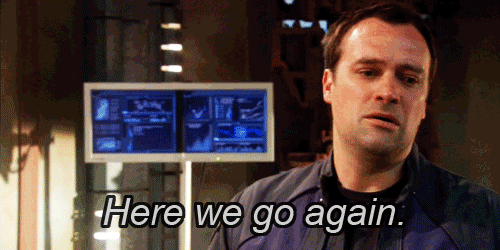
Also, just some background on myself before I go further.
I started doing reviews for some sites as far back as 2009, and I was inspired by TGWTG/CA and a number of people on Youtube to kickstart a series of my own. The original blueprint was to do a fanfiction based review series with two other friends - one of which is/was also a fan of the site. Those plans fell through due to how complicated it was (especially since we were still in high school), and I turned to doing my own series. I kept the name I made for my persona, Fyrom, and established myself as the Scavenger Reviewer - as my work consisted of the scraps people left behind or overlooked. The content consisted of obscure PSA/PIFs (like Dangerous Games, an 80s PSA film about fireworks) and failure to launch shows (such as Heat Vision and Jack), and would eventually consist of the direct to video stuff from the 80s and 90s like the original Barney and the Backyard Gang series and the direct-to-video Mary Kate and Ashley stuff - which Allison and Phelous would review later on.
I began doing those around the summer of 2012 or so for The NetDwellers and Manic Expression until both sites (the original ME site) shut down and I’ve put the series on an indefinite hiatus in 2014 due to my declining mental health issues. While I wasn’t on a level like Why Guy or The Fanfic Critic where they had somewhat of a following, I joke that I was a z-lister with how short lived and obscure I was. From start to finish, it was always my dream to eventually get the attention of those I looked up to, like Diamanda Hagan and Kyle Kallgren (OanCitizen) to team up and make something great. Following the news that broke in 2013, I started distancing myself from the site and I only ever popped by the forums to talk with fellow fans of Brad Jones (The Cinema Snob). And here we are now in April 2018, and I’m sure this is the last time we’ll see the site active.
And with all that out of the way, I’m back on track to giving my own two cents. I’m pretty sure that, unless something new happens, this will be the last time I ever talk about CA/TGWTG.
As I said, I got online to check some emails and saw that Soft Lavender, who has been making videos discussing the document “Not So Awesome” in regards to the grievances by former Channel Awesome contributors and the trending hashtag #ChangeTheChannel, was doing a stream (which as of 2:23PM EST, is still ongoing) and the title was/is “Channel Awesome Responds and Is Not Sorry”. I dove in as fast as I could and then jumped onto Channel Awesome to see the response and who was left; which, as of writing this, MasakoX and Angry Joe left last night - bringing us down to eight contributors.
The post, which appears to be written by Mike Michaud, attempts to absolve the “allegations” listed in the document; from all the sexual misconduct that has taken place on behalf of Mike Ellis and an unknown contributor, the misogyny, and the horrible mismanagement. Here’s how it starts:
“Since the posting of the “Not So Awesome” document on Monday, April 2, 2018, we have been exploring all of our options of how to address the lies that have been alleged by multiple disgruntled individuals with vindictive intentions.
Channel Awesome has always tried to keep our dealings with our content partners out of the public eye and despite any differences or disagreements we have never publicly spoken negatively about any of them, but a response to the accusations leveled against us must happen. Obviously, we cannot address all 73 plus pages of accusations against us in this forum, but we will address the most egregious now.“
I’m sorry, what now?
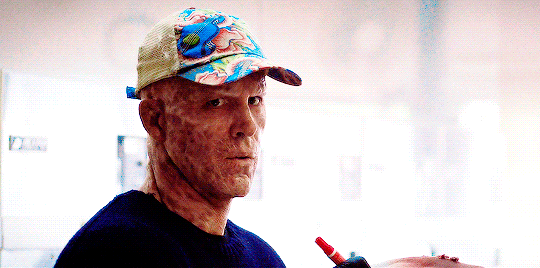
As MarzGurl (Kaylyn Saucedo) said in a currently ongoing stream, from this point on, any chance of this being in good spirits has gone out the window. The comments on said post echo the anger many of us; fans and former contributors alike have been saying for a long time. This is an absolutely horrible excuse for an attempt at saying sorry for their actions, and they’d rather point fingers at people coming forward rather than take responsibility for their own incompetence and mistreatment of their staff. Many of the comments agree that a lot of Michaud’s choosing of what to address were jabs at both Holly Brown and Allison Pregler (Obscurus Lupa), which is almost insulting considering what they both had to deal with - especially from Michaud himself.
Here’s what Michaud had to say in response to “accusations” about the lack of communication:
“We agree communication could have and should have been better. We got into this business based on our passion for content creation and have had many growing pains over the years. We always strive to learn from our mistakes and strengthen our skills. Have we made mistakes? Yes, we have. We even discuss some of our challenges in our behind the scenes videos. We’ve always focused on trying to entertain our viewers, shine spotlights on unknown talent and share our attention with various charities – and we hope to continue to do so moving forward.”
This shouldn’t have happened to begin with, and if they know mistakes were made, they should have resolved them then and there. Keep in mind that this has been going on for years, and many of the grievances go all the way back to Kickassia, which was made in 2010. This wasn’t a recent thing that these people wanted to just bitch about for attention or to be vindictive or petty - and that’s excluding the injuries and general arrogance (not even ignorance at this point) with how sets are managed; such as Lindsay asking about water on set, to which she got laughed at until Spoony said providing water and food for your crew is the bare minimum you have to have. A lot of this what people want to know about was either barely touched or omitted all together - such as said injuries, Dr. Gonzo‘s tribute to JewWario (Justin Carmichael), the rampant homophobia, the absolute incompetence with how filming the anniversaries were, MarzGurl (Kaylyn Saucedo) getting a lot of shit for the stuff she did with ScrewAttack, and how IndieGoGo threatened to investigate them for potential fraud due to the failed show Pop Quiz Hot Shot to name a few.
A lot of this is still ongoing and a raging tire fire when this is all over. More news is coming out about some details of the document, and I’m both deeply hurt and upset by this. So maybe this won’t be the last post from me. If you wan to keep up with what’s going on, please head to Soft Lavender’s Youtube channel and join the stream.
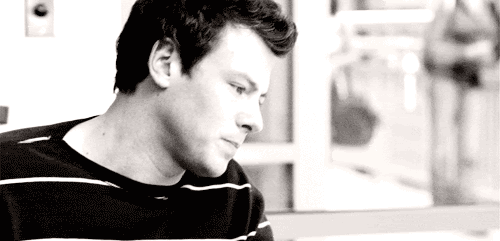
4 notes
·
View notes
Text
Why Astronomers Want to Build a SETI Observatory on the Moon
https://sciencespies.com/nature/why-astronomers-want-to-build-a-seti-observatory-on-the-moon/
Why Astronomers Want to Build a SETI Observatory on the Moon
This article was originally published on Supercluster, a website dedicated to telling humanity’s greatest outer space stories.
On Monday, a group of researchers sponsored by Breakthrough Listen, the world’s largest program, submitted a paper to National Academy of Sciences’ Planetary Science and Astrobiology Decadal Survey that makes the case for establishing a SETI radio observatory on the farside of the moon. The decadal survey establishes scientific priorities for the next ten years and the new paper addresses one of the biggest problems facing the search for extraterrestrial intelligence today: The overwhelming amount of radio interference.
Our planet has become so “loud” in the part of the radio spectrum observed by SETI that it threatens to drown out any signal sent from an intelligent civilization. Not only would a lunar radio telescope not have to deal with terrestrial radio interference, it could also significantly increase our chances of hearing from ET by opening up parts of the radio spectrum that are blocked by Earth’s atmosphere. While the idea of using the moon for radio astronomy is decades old, the researchers make the case that technological advancements have finally made a lunar SETI observatory truly feasible.
“The transportation infrastructure for getting to the moon is much cheaper than it’s been for the last few decades, so now it’s actually possible,” says Eric Michaud, an intern at the SETI Berkeley Research Center and the first author of the paper. “Maybe not today, but I think it’s going to get more and more feasible as time goes on.”
Radio interference has been a problem for SETI from the very beginning. In the spring of 1960, the planetary scientist Frank Drake trained the massive radio telescope at Green Bank Observatory in West Virginia on Tau Ceti and Epsilon Eridani, two stars a mere 12 light years from Earth. That summer, Drake spent his days studying the signals picked up by Green Bank’s giant mechanical ear in the hopes of receiving a message broadcast by an alien civilization orbiting those stars. Known as Project Ozma, Drake’s experiment marked the beginning of SETI, the scientific search for extraterrestrial intelligence.
Shortly after Drake started his observations, he was surprised to find what appeared to be a signal of intelligent origin. After days of watching a needle drift lazily over a spool of paper recording the random undulations of cosmic static, Drake and his colleagues were jolted awake when the machine started recording the frantic pulses of a strong radio signal picked up by the telescope. The timing and magnitude of the pulses clearly marked them as artificial; there was nothing in the natural world that could produce such a frenetic radio profile. It would have been an astounding stroke of luck to pick up an alien message after only a few hours of observation, but it was hard to argue with the data. “None of us had ever seen anything like it,” Drake recalled in Is Anyone Out There?, his autobiographical book about the early days of SETI. “We looked at each other wide-eyed. Could discovery be this easy?”
After doing somefollow up searches, it was clear that Drake had discovered an airplane, not an alien civilization.
It was a letdown, but the false detection turned out to be a portent for the future of SETI. In the 60 years since Drake’s pioneering experiment, researchers have conducted dozens of SETI searches across thousands of stars and turned up empty-handed. At the same time, the sources of radio interference on Earth—military radars, TV towers, cell phones, and satellites—have exponentially increased, which greatly increases the chances that an extraterrestrial signal will be lost among the noise.
Earth was never a particularly great place to do any kind of radio astronomy due to our thick atmosphere blocking a large portion of the radio spectrum. The proliferation of radio communication technologies has only made things harder. The moon, by comparison, has no atmosphere and its nights last for weeks on end, which limits radio noise from the sun. And as NASA discovered through a spate of lunar orbiter missions in the late 1960s, the moon also acts as a natural shield that blocks radio signals emanating from Earth. As the planetary astronomer Phillipe Zarka has put it, “the farside of the moon during the lunar night is the most radio-quiet place in our local universe.” It’s exactly the sort of peace and quiet you want if you’re searching for faint radio signals from solar systems that might be hundreds of light years away.
The new Breakthrough Listen paper proposed two main approaches to a lunar SETI observatory: an orbiter and a telescope on the surface. The basic idea behind a SETI lunar orbiter would be to scan for signals as it passed over the lunar farside and relay data back to Earth as it passed over the near side. One of the main advantages of an orbiter is cost. The proliferation of small satellites that are capable of accurate tracking combined with low-cost small launch providers like Rocket Lab means that a SETI orbiter could conceivably be sent to the moon for less than $20 million. This would be a valuable pathfinder mission that could pave the way for a more ambitious observatory on the surface, but without the risk and cost. As the ill-fated Israeli Beresheet lander mission reminded us, landing on the moon is extremely challenging even when the mission is backed by $100 million.
But a SETI lunar orbiter would also come with a lot of compromises. It would only be able to conduct observations during the brief stretches when it was on the lunar farside, which would make a sustained observation campaign more challenging. The upshot is that an orbiter would have access to the full sky, whereas a telescope on the surface would be constrained by the moon’s rotation. The biggest downside of an orbiter is that it might lose a lot of the shielding benefits of the moon and be more vulnerable to radio interference from Earth since it would be orbiting high above the lunar surface.
“The first SETI observations that are done from the lunar farside will be done from orbit, there’s no question about that,” says Andrew Siemion, the director of the Berkeley SETI Research Center and the second author on the paper. “I think eventually we absolutely want to do something on the surface because we want to build a very large aperture telescope, but even when we’re at that point I don’t think that would negate the utility of doing things from orbit as well.”
So what would a SETI observatory on the moon look like? One idea is to use the naturally parabolic lunar crater as a radio dish, much like the Arecibo telescope in Puerto Rico and the FAST telescope in China, which are built into natural depressions in the land. This idea was first considered back in the late 1970s by a group of scientists at the radio physics lab at the Stanford Research Institute. Their idea was to recreate Arecibo on the moon by suspending an antenna from the lip of a crater and using the basin as a reflector. The reduced gravity on the moon would allow for a radio telescope far larger than any on Earth, which could significantly enhance the sensitivity of SETI searches. Ultimately the researchers concluded that a lunar radio observatory was too expensive compared to SETI telescopes that could be built on Earth.
But 40 years later, Michaud says that building a radio dish in a lunar crater may finally be cheap enough to pull off. One of the main drivers of this cost reduction is the advent of commercial launch providers like SpaceX and Rocket Lab, which have dramatically lowered the cost of space access. Another driver is NASA’s push to establish a permanent human presence on the moon, which has subsidized the development of a fleet of commercial lunar exploration vehicles. “There’s so much interest in going back to the moon,” says Michaud, who cited Blue Origin’s lunar lander and Rocket Lab’s Photon Lunar satellite as examples of technologies enabled by NASA’s Artemis program.
A crux of the original vision for lunar SETI observatories was that it would require a human settlement on the moon to build and operate the radio dish. But robotic systems have improved enough that it may be possible to take humans out of the equation. This was clearly demonstrated in 2019 when China’s Chang’e 4 rover landed autonomously on the farside of the moon. These advancements in autonomous navigation have laid the foundation for a lunar radio observatory that is built entirely by robots.
It sounds like science fiction, but earlier this year NASA’s Advanced Innovative Concepts program awarded one of it’s prestigious grants to Saptarshi Bandyopadhyay, a researcher at the Jet Propulsion Laboratory, to figure out a way to make it happen. His idea is to use rovers to deploy wire mesh in a crater on the lunar farside and suspend a receiver over the dish. NIAC is all about funding high risk, high reward missions, and there’s no guarantee that Bandyopadhyay’s proposal will ever come to fruition. Still, addressing the technical problems associated with building a radio receiver on the farside of the moon is an important first step.
And Bandyopadhyay isn’t the only NASA-backed researcher contemplating a lunar radio observatory. Jack Burns, a radio astronomer at the University of Colorado, has also received a grant to study a mission concept for a radio telescope array called FARSIDE. Instead of using a crater as a dish, FARSIDE would deploy several smaller antennas across the lunar surface that would collectively form a large radio telescope. Both NASA studies are focused on radio astronomy rather than SETI, but Siemion sees the two disciplines as natural allies in the quest to establish an observatory on the lunar farside. SETI has piggybacked on other radio astronomy projects in the past—SERENDIP, for instance, opportunistically searched for ET signals during radio observation campaigns at a variety of telescopes—and it seems plausible that a similar arrangement could be made with an observatory on the moon.
Siemion acknowledged that there were certain technical challenges that would arise in a collaboration on a lunar radio observatory. The biggest issue, he says, is that a lot of radio astronomy is done at frequencies that don’t really require an observatory on the moon. “Radio frequency interference is far less of a problem for conventional radio astronomy than it is for SETI,” Siemion says. “ Putting radiometers that operate at centimeter wavelengths on the lunar farside is really kind of a niche activity for SETI because radio frequency interference is such a singular challenge for us.”
And as the Breakthrough Listen team points out in their new paper, building an observatory on the lunar surface comes with significant engineering and operational challenges. The two-week-long nights on the lunar surface means that an observatory would have to find a way to get power that doesn’t rely on solar panels, and the energy requirements of an Arecibo-sized observatory would be substantial to run the telescope and do on-site data analysis. NASA has been developing small nuclear reactors that would deliver enough power to keep a moonbase running and these could also conceivably be deployed for a lunar radio telescope. But so far NASA researchers haven’t tested one beyond Earth.
A farside crater observatory would also depend on an orbiter to relay data back to Earth, which could create radio interference for the dish, the very thing it was trying to avoid. It may not be necessary to start on the farside, however. In a separate paper submitted to NASA’s Artemis III science definition team, the Breakthrough Listen team suggested it might be possible to create a SETI observatory at the lunar south pole, the purported destination for NASA’s first crewed return to the moon. While the south pole isn’t as radio-quiet as the farside, if an observatory was placed on the back of Malapert Mountain near the pole, it would also be protected from a lot of Earth’s radio interference.
But in both cases, the observatory would still be exposed to radio interference from existing orbiters such as China’s Queqiao satellite that serves as a relay for its farside rover. And the moon is only going to get noisier the next few years. NASA and other national space agencies have a number of lunar missions on the books—both crewed and robotic—that may contribute to radio interference. Claudio Maccone, the chair of the International Astronautical Association’s SETI committee, has advocated for the creation of a radio-quiet preserve on the lunar farside to avoid this problem. The concept is similar to radio-quiet zones around telescopes on Earth but is complicated by the fact that establishing a similar zone on the moon would require cooperation from every country and company with the technological means to get there.
So will we ever see a SETI observatory on or around the moon? Both Michaud and Siemion are confident that we will. “The future of astronomy is going to be in space for the most part,” says Siemion. “As access to space becomes cheaper and more democratized, astronomy will move there and I think much of that will be done from the lunar surface.” There are a number of technical, political, and financial challenges that will have to be addressed before it happens, but the Breakthrough Listen team is optimistic that a small orbital pathfinder mission is feasible within the next few years. As they note in the conclusion of their paper, “a lunar SETI mission would mark the beginning of a new era in the history of SETI.” And after decades of fruitless searching, it may be exactly the type of innovation that leads to first contact.
#Nature
0 notes
Photo

Robert Pattinson: "I had the worst modeling career in history" - with L’Officiel by Juliette Michaud published 04.09.2017
#translated via Bing *with edits. Interview conducted during Cannes 2017 at the Marriott.
Why did you want a role in Good Time?
I love highly charged videos, and I dreamed of finding a feature film that would give the same adrenaline. The Safdie brothers have infused a kind of explosive energy from end-to-end, while producing a meticulous and controlled film. I still do not know how they accomplished such a feat.
Where does this urgent desire comes from?
I tend to feel fake when I make a film, or that I am an impostor, and in this case I’d withdraw. I could only deliver a superficial performance, keeping to myself the more complex side, or at least more anxious. For several years, I had been thinking that to get out of this trap, I would need a director who would be so quick that I would not have time to think. I was looking for someone who would allow me to be more instinctive.
Do you know the work of the Safdie brothers whose success had been unknown until then, but who are among the most promising directors of American independent cinema?
Yes, because I’m obsessed with movie reviews, it’s the only thing I read, from morning to night, on the internet, and to discover new talents. I was very intrigued by these new “Coen brothers” in their early thirties. I knew they had already made three indie films (The Pleasure of Being Robbed in 2008, Lenny Cooke in 2013 and Heaven Knows What in 2014); Portraits of marginal New Yorkers with minimal budget, camera on the shoulder, a lot of improvisation and a certain taste for the absurd. That spoke to me.
Introduce us to your character in Good Time.
This is Connie, a young unstable robber who leads Nick, his mentally handicapped brother played stunningly by Ben Safdie himself, in a series of bad moves. A course of action turns bad, Nick is arrested and Connie tries to rescue him. Except that Connie is dragged into a chain of nightmarish situations. The character is complicated. What I find nice was that the brothers had not finished the script when I met them: I could understand and grasp Connie’s mentality during writing.
You lived in this role, as you did in James Gray’s The Lost City of Z, where you were unrecognizable as a bearded explorer with little glasses.
I had accepted The Lost City of Z role not just because I saw “Two Lovers” of James Gray, but also because it was two months of filming in the amazon jungle. Good Time, it’s more like the urban jungle. To get ready, I stayed for two months locked up alone in the basement of an unhealthy building in Harlem with boxes of tuna for food. I must have mercury poisoning (laughs). I never opened the curtains, I slept dressed. This seems extreme, but it was necessary to cultivate this feeling of isolation in order to obtain a credible result. Then the shooting was sixteen or seventeen hours daily. We put everything in this film.
We also have the impression that the Safdie brothers had fun with your vampire image from Twilight …
It is true that I came in brunette in the film, to come out bleached hair, looking haggard and pale. Ben and Josh are clever, they have fun with everything.
Do you always feel that you need to break up your youthful image, that you still have to prove yourself?
No, because I am always surprised that I am considered a “beautiful face”. I consider that I should prove that I can be a handsome youth first! (*Laughter*) This image comes from the phenomenal success of the Twilight series: people confused me with my character, it was insane. But I hope I do not sound like complaining. Especially since the era of the paparazzi is fading away, and I live in London where I manage to have a normal life. What I care about is acting. It is such a privilege …
How do you see your own course of development?
When I was 15, an agent noticed me at the theater. I did not go to any drama school and I did not come from cinema. My mother worked in a modeling agency and brought me to auditions at 12 years old. I had a bit of success in modeling because I looked quite androgynous then, it was popular, after that I think I had the worst modeling career in history.
You became a muse of Dior, photographed by Karl Lagerfeld … not bad for a missed career!
(*Laughter*) I remember, when I signed with Dior, being very nervous. At the time, the actors were running ads only in Japan to make sure no one would ever see them! But I thought it would make me bankable, and that would encourage young directors to use me. Along the way, I learned to appreciate the Dior team. And a year after my contract, all the actors began to do it like me! Appearing in ads is no longer a moral dilemma for actors.
You’ve been looking for more personal projects that led up to your collaboration with David Cronenberg.
Getting a role in Harry Potter and the Fire of Goblet kicked off everything quickly, Twilight then set fire on the powder, it was necessary to calm the frenzy. To sign on for the role of Bel Ami was daunting for me as I adore Maupassant. Water for Elephants with Reese Witherspoon, with whom I first started acting in film (Vanity Fair 2005) was beautiful. I’m just as proud of the Australian futuristic western The Rover or Life by Anton Corbijn … But Cosmopolis and Map to the Stars with the great Cronenberg showed that I have grown.
You are also a musician. Are you looking for a musical role?
I play the guitar and piano and I have always tried to make a film about The Band. They were all under 23 when they were successful, it fascinates me. The script is written, I’m still looking for a producer and a director.
The songs you’re listening to right now?
Let me see … (he grabs his smartphone.) There’s Donny Hathaway, Janet Jackson … I also listen to some weird music: the soundtrack of Fritz Lang’s Metropolis. How is this possible? It is a silent film! I’m telling you, I’m very weird (laughs).
An actor who made you want to be an actor?
Jack Nicholson.
What is your current state of mind?
I just entered a phase where I really enjoy acting. I am in the next Claire Denis, a sci-fi film, and her first in English. If I had been told that one day, I would not have believed it. Working with Claire Denis is the high point of my career.
52 notes
·
View notes
